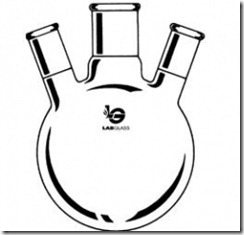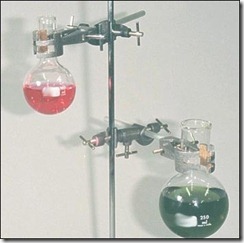This Glassware is widely known, also called Burets, it has a particular shape.
 |
| Source: www.progress.com.sg |
Characteristics
The burette has a long cylindrical shape, filled with volumetrical graduations along the cylinder, it has a stopcock with a plug and a bore, made generally out of glass, borosilicate or pyrex. Pyrex burettes are rarely seen, pyrex was build to resist heat but this glassware is used for volumetrical purposes and precision is needed, this cannot be achieved if the fluid is hot, because it will eventually cool down, changing the graduation of the glassware and its density aswell, that’s why most of these graduated glassware come with specification about the temperature on which they have been calibrated. The most common volume found is 25 and 50 ml. But there are 100 ml burettes aswell.
 |
| Source: www.geckooptical.com |
Uses
Used mainly in titrations, to dose an exact volume of a reactant on a certain reaction. Some use it to measure liquid volumes but its not recommended as there are other glassware on a science lab for those purposes. The first time I learned how to use this glassware was on laboratory science courses, when I was just starting at the university, it has a particular procedure to use it properly.
More Laboratory Glassware













